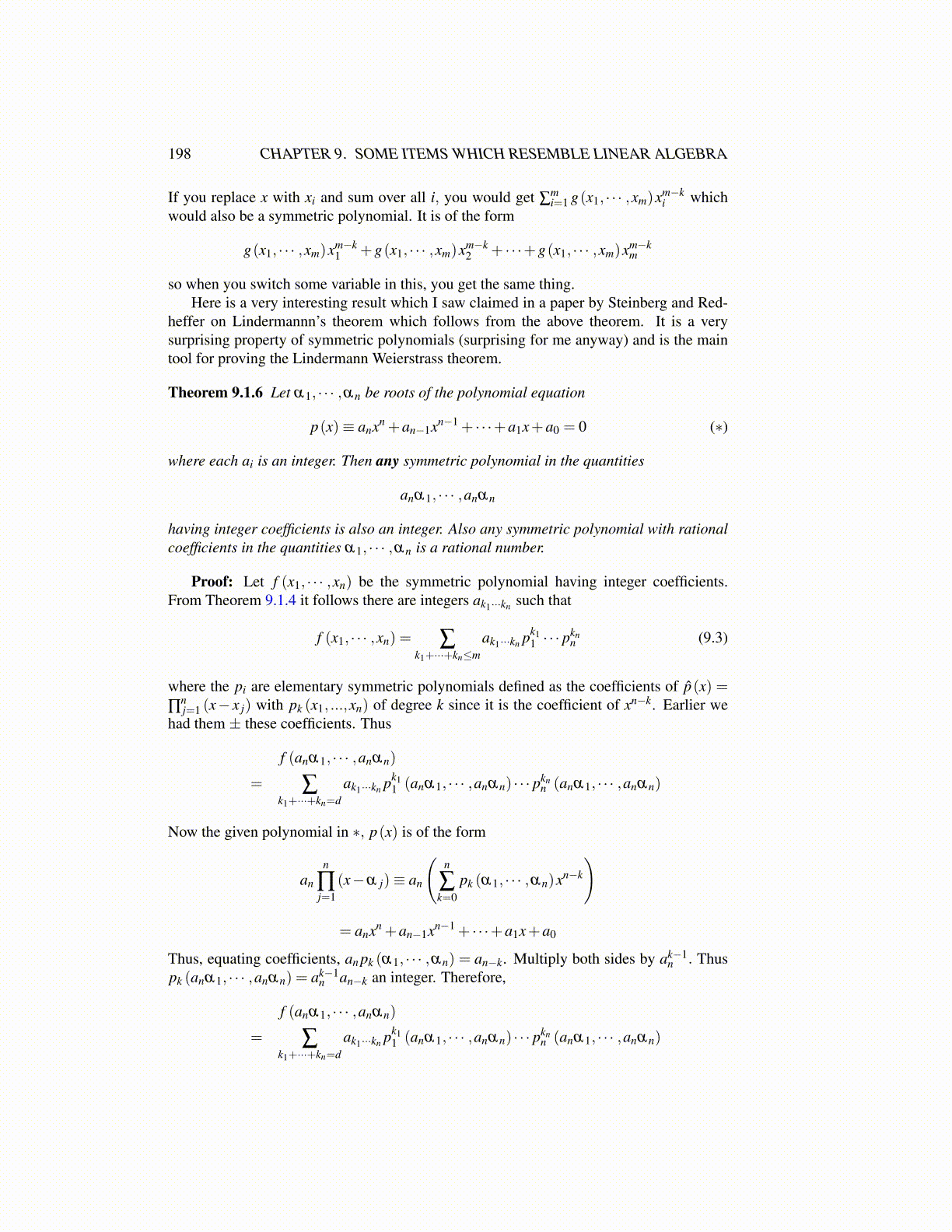
198 CHAPTER 9. SOME ITEMS WHICH RESEMBLE LINEAR ALGEBRA
If you replace x with xi and sum over all i, you would get ∑mi=1 g(x1, · · · ,xm)xm−k
i whichwould also be a symmetric polynomial. It is of the form
g(x1, · · · ,xm)xm−k1 +g(x1, · · · ,xm)xm−k
2 + · · ·+g(x1, · · · ,xm)xm−km
so when you switch some variable in this, you get the same thing.Here is a very interesting result which I saw claimed in a paper by Steinberg and Red-
heffer on Lindermannn’s theorem which follows from the above theorem. It is a verysurprising property of symmetric polynomials (surprising for me anyway) and is the maintool for proving the Lindermann Weierstrass theorem.
Theorem 9.1.6 Let α1, · · · ,αn be roots of the polynomial equation
p(x)≡ anxn +an−1xn−1 + · · ·+a1x+a0 = 0 (∗)
where each ai is an integer. Then any symmetric polynomial in the quantities
anα1, · · · ,anαn
having integer coefficients is also an integer. Also any symmetric polynomial with rationalcoefficients in the quantities α1, · · · ,αn is a rational number.
Proof: Let f (x1, · · · ,xn) be the symmetric polynomial having integer coefficients.From Theorem 9.1.4 it follows there are integers ak1···kn such that
f (x1, · · · ,xn) = ∑k1+···+kn≤m
ak1···kn pk11 · · · p
knn (9.3)
where the pi are elementary symmetric polynomials defined as the coefficients of p̂(x) =∏
nj=1 (x− x j) with pk (x1, ...,xn) of degree k since it is the coefficient of xn−k. Earlier we
had them ± these coefficients. Thus
f (anα1, · · · ,anαn)
= ∑k1+···+kn=d
ak1···kn pk11 (anα1, · · · ,anαn) · · · pkn
n (anα1, · · · ,anαn)
Now the given polynomial in ∗, p(x) is of the form
an
n
∏j=1
(x−α j)≡ an
(n
∑k=0
pk (α1, · · · ,αn)xn−k
)
= anxn +an−1xn−1 + · · ·+a1x+a0
Thus, equating coefficients, an pk (α1, · · · ,αn) = an−k. Multiply both sides by ak−1n . Thus
pk (anα1, · · · ,anαn) = ak−1n an−k an integer. Therefore,
f (anα1, · · · ,anαn)
= ∑k1+···+kn=d
ak1···kn pk11 (anα1, · · · ,anαn) · · · pkn
n (anα1, · · · ,anαn)